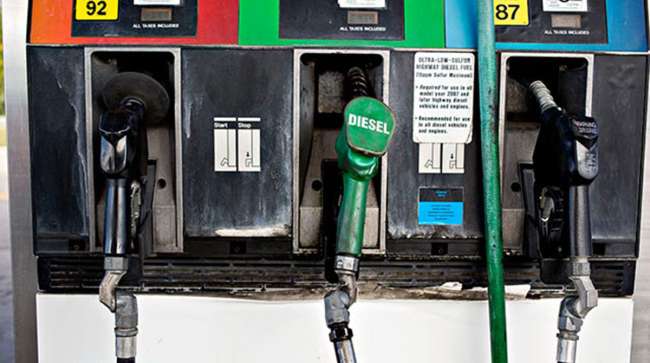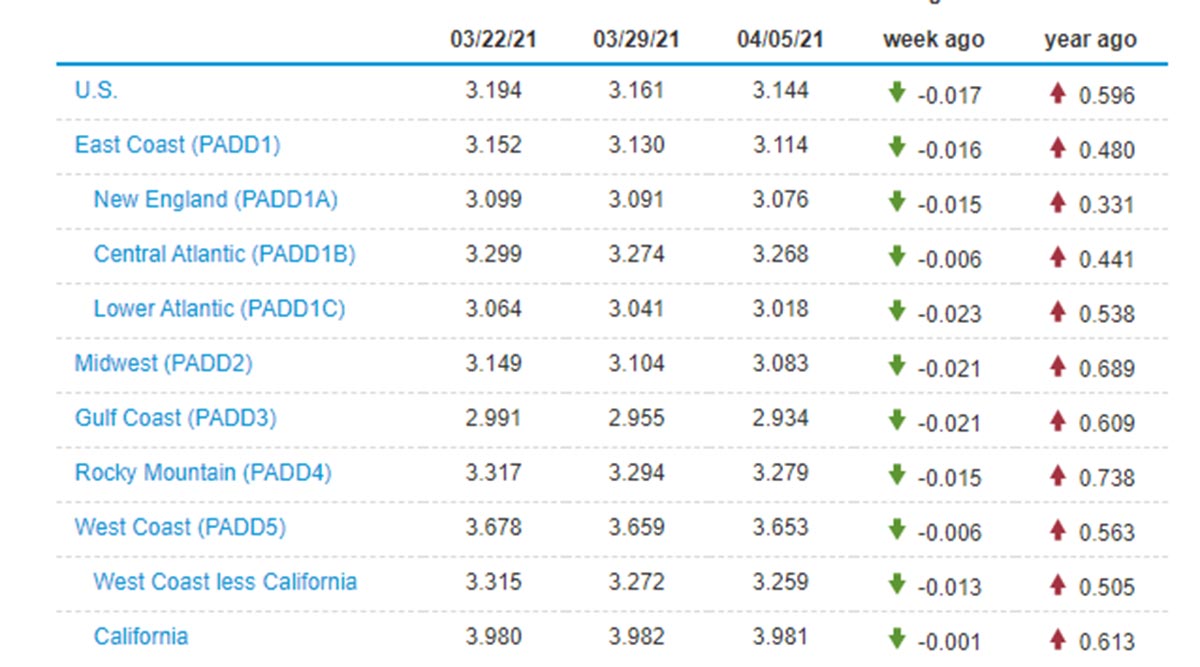Diesel Slips 1.7¢ to $3.144 in Second Straight Drop

[Stay on top of transportation news: Get TTNews in your inbox.]
The national average price of diesel dipped 1.7 cents to $3.144 a gallon, according to Energy Information Administration data released April 5.
Texas being hit with a polar vortex in February contributed to a lot of pressure on fuel as the state has many refineries. In the time since, many of the issues have been resolved but not completely. Refineries are still in the process of coming back on line.
“We’re seeing a little bit of calm before the storm, especially gasoline prices finally leveling out after going straight up every day,” Phil Flynn, senior energy analyst at The Price Futures Group, told Transport Topics. “We finally had the first break in gasoline prices in a long time. And I think part of that is because some of the refineries started to come back on line after the Texas situation. We’re seeing an increase in refinery runs. So we’re starting to see a little bit of a recovery here.”
Highlights
-
The decline was the second consecutive after 20 straight weeks of increases. Trucking’s main fuel slid 3.3 cents a gallon the week of March 29.
-
Based on the national average, a gallon of diesel is 59.6 cents more expensive than it was a year ago.
-
Trucking’s main fuel posted decreases in all 10 regions in EIA’s survey, yet a gallon costs more in all 10 regions than at this time in 2020.
-
Diesel’s price dropped the most, 2.3 cents in the Mid-Atlantic.
-
Gasoline went in the other direction, up half a penny to $2.857 a gallon, 93.3 cents more expensive than a year ago.
“But all of those things, I think, are really just going to have a small impact this summer,” he said. “We still see the market tightening significantly as we reopen the economy. I think people have been too pessimistic about the demand thus far.
“With the strong manufacturing data that we are seeing in the U.S. and around the globe, we think that’s going to keep upward pressure on diesel prices. So we’re expecting a little calm before the storm.”
Flynn suspects the price break will be short-lived. He added that the price of gas will start to rise as summer approaches. He also thinks that will boost the cost of diesel as well.
“A large component of our business is fuel delivery,” Doug Roberie, vice president for asset logistics at Dupré Logistics, told TT. “We’ve got the customer experience and what we’re seeing in terms of demand. And then we also have the cost of running trucks. The use or the cost side. Diesel fuel is appreciated. There was an increase in price by a little over 50 cents since the beginning of the year.”

Roberie
Roberie said the price of diesel was fairly steady and cheap for much of last year after the coronavirus pandemic first hit. He noted it started increasing since November but midway through March began inching down.
“We expect diesel to be pretty high the rest of this year just because of increased demand,” Roberie said. “We expect the remainder of this calendar year to be pretty strong from a transportation standpoint. We’ve got capacity tightening up out there. It’s been tightening for a couple of months, and we expect that to stay about where it is in terms of demand and we see fuel prices staying up this year.”
He added that his company usually sees an increase in fuel demand after Easter, and this year it is heightened because of vaccine distribution. He expects that elevated demand to last through at least October.
U.S. On-Highway Diesel Fuel Prices

“I will tell you, though, with this big nationwide freeze that we went through a few weeks ago, we still have supply problems in certain markets,” Roberie said. “These refineries went down and then coming back up, allocation has been tough in a lot of markets. So length of haul has increased in some markets because our normal sources of fuel just don’t have the supply right now. So we’re having to run out of market, so to speak, to service some of these locations.”
Dupré Logistics, based in Lafayette, La., ranks No. 90 on the Transport Topics Top 100 list of the largest for-hire carriers in North America.
Want more news? Listen to today's daily briefing below or go here for more info:


